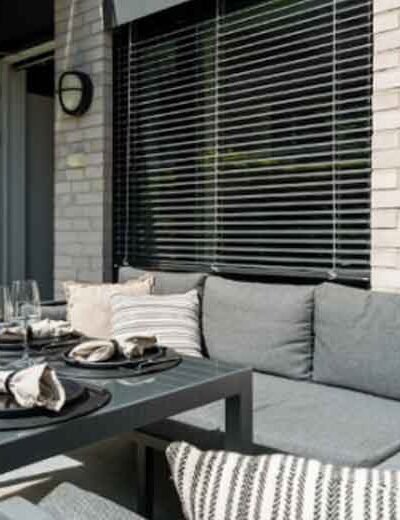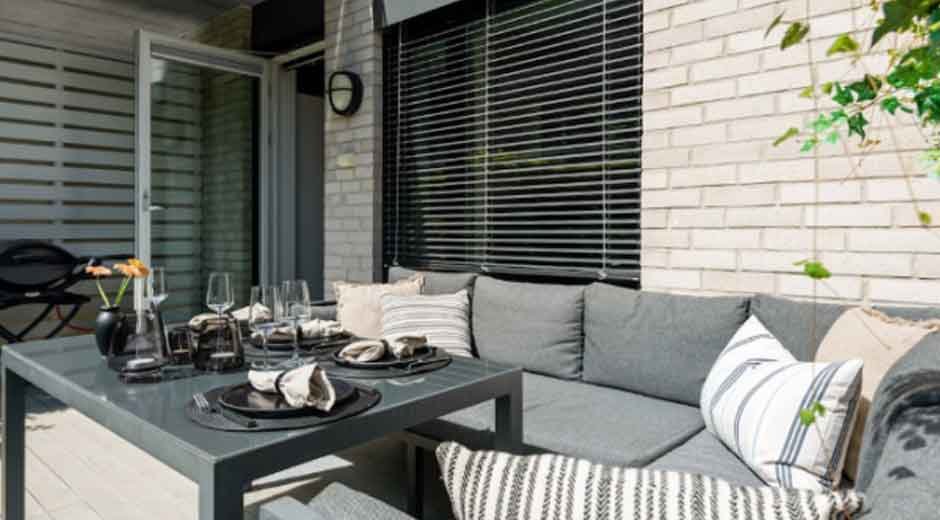Spending time outside isn’t just a nice bonus anymore. For many families, it’s part of daily life. Whether it’s having a cup of coffee in the morning or winding down after work, being outdoors helps people relax and recharge. But for most homeowners, outdoor space only gets used a few months out of the year. Once the weather turns too hot or too cold, the patio sits empty.
In cities like Richmond, VA, where summers can be hot and winters bring a chill, designing a space that works year-round takes a bit of planning. But once it’s done, the results are worth it. You get more usable space, better flow between indoor and outdoor areas, and a place that works for everything from dinner with friends to quiet time alone.
This guide will walk you through simple ways to turn your outdoor area into a space you’ll use all year.
Think About the Whole Year, Not Just One Season
When planning an outdoor space, many homeowners focus only on spring and summer. They picture sunny days, patio dinners, and weekend lounging. But to get the most out of the space, you need a setup that works through every season—including the colder and wetter months.
If you’re starting with a deck or thinking about updating one, consider how it will function in all types of weather. A good layout takes into account sunlight, wind, and how temperatures shift during the day. It also leaves room for heating, shading, and flexible furniture use.
To make sure your deck design fits these needs, it helps to talk to someone who knows the local climate and building practices. Working with a local Richmond deck builder gives you access to practical advice on materials, spacing, and structure. They can help you create a deck that’s not just built well but also ready for year-round living.
Covered Areas Make a Big Difference
Adding a roof, awning, or pergola is one of the best ways to make your outdoor space more flexible. These features block sun and rain, which makes the space usable in more situations.
You don’t need a full roof to make it work. Even a partial cover gives you shade during the summer and some shelter when it rains. In cooler months, it can also help trap heat from outdoor heaters or a fire pit.
Covered areas can be permanent or adjustable. Some people choose retractable awnings or shade sails. Others go for a full wood structure. Either way, the goal is to give yourself options so you’re not stuck indoors just because the weather changes.
Furniture That Can Handle the Elements
Buying the right furniture is about more than just looks. You want items that last through sun, rain, and cold without falling apart. Look for treated wood, metal frames, or resin-based materials that don’t crack or fade. These hold up well across the seasons and don’t need constant upkeep.
Cushions should be made with water-resistant fabric. Avoid anything that soaks up water or fades in the sun. And while it’s okay to use stylish pieces, try to pick ones that also feel practical. The more durable the setup, the less time you’ll spend moving things in and out every few weeks.
Keeping Warm When Temperatures Drop
Just because the air gets cold doesn’t mean you have to go inside. Add a heat source to extend how long you can use your space. There are several options. Free-standing propane heaters are simple and effective. Mounted electric heaters work well for covered decks. A built-in fire pit adds warmth and a natural gathering spot.
The best choice depends on your layout, budget, and how much warmth you need. Some people even add heated flooring to stone patios, although that’s more of an investment. For most families, a fire pit or portable heater gets the job done without too much effort.
Cool Down the Space in Hot Weather
When it’s hot outside, even a beautiful space can feel unusable. That’s why adding cooling features is just as important as heating. Ceiling fans or wall-mounted fans help move air and make the space feel better right away. For an extra touch, a misting system can drop the temperature by several degrees.
These upgrades don’t have to be expensive. Many fans and mist kits are designed for outdoor use and are easy to install. Even a simple fan can help reduce the discomfort of still, hot air during summer afternoons.
Lighting That Works for Every Time of Year
Lighting often gets overlooked, but it’s a big part of year-round outdoor design. It keeps your space usable after dark and adds a sense of comfort and safety. Instead of relying on one large fixture, try to layer different types of light.
Wall lights or sconces work well on the house or deck railing. You can also add small spotlights to highlight plants or architectural features. For soft mood lighting, string lights or solar lanterns work great and don’t require complex wiring.
Make sure you choose fixtures rated for outdoor use. Wet-rated lighting is the safest option. And if you want year-round flexibility, consider dimmers or smart bulbs that adjust to the time of day or season.
Plants That Stay Lively in Every Season
A mix of plants can help keep your outdoor space inviting, even when the weather shifts. Start with a few evergreen plants or shrubs. These keep their shape and color during the colder months, giving your space a fresh look year-round.
Then, add in seasonal flowers or herbs depending on the time of year. Potted plants work well since you can move them around as needed. If you’re not sure what grows well in your area, ask a local garden center for advice on plants that hold up in both hot and cold weather.
Planters and raised beds also give you more control over soil, watering, and light. That makes it easier to keep things alive longer and refresh your setup as needed.
Designing an outdoor space you can enjoy all year is more than just a trend. It’s a smart way to make your home feel bigger, more comfortable, and more useful. With the right setup, you don’t have to wait for the “perfect” season. You can eat dinner outside in October or read a book on the deck in March.
It doesn’t take luxury features or a huge budget. A few thoughtful choices—like durable furniture, weather-friendly lighting, and proper heating or cooling—can make all the difference. If you’re not sure where to start, consider talking to local professionals who understand your climate and needs.
In the end, the goal is simple: create a space that works for you no matter the season. Once you do that, you’ll wonder how you went so long without it.






Leave a Reply